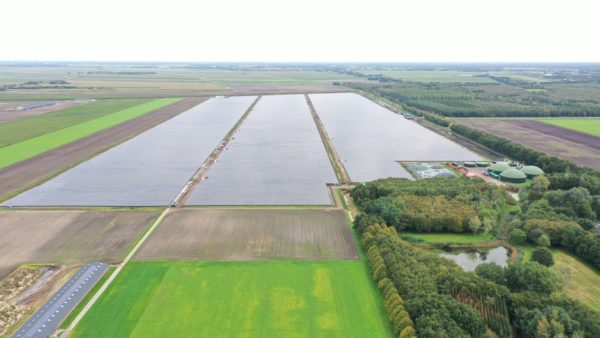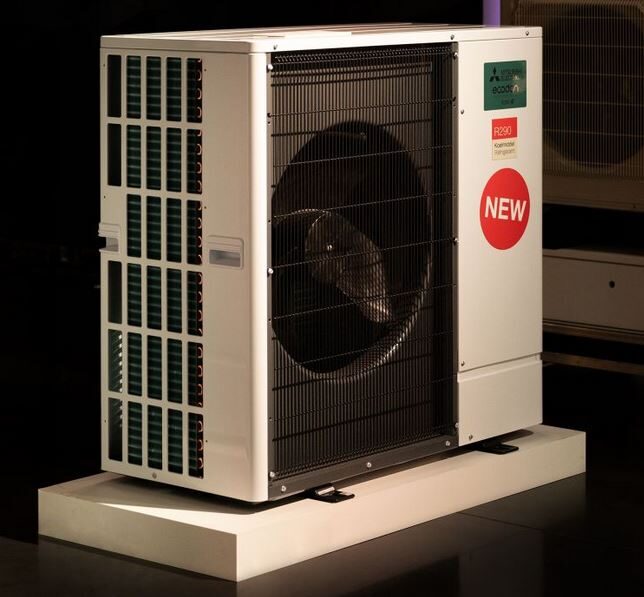Chint Solar, a unit of China-based power transmission and distribution equipment provider Chint Group, has completed construction on three solar parks with a combined capacity of 152 MW in the Netherlands.

Image: Chint Solar
The largest of the three solar plants – the Zonnepark Stadskanaal with capacity of 101 MW – was built with 245,000 solar panels on 83ha in the homonymous municipality, in the province of Groningen. The facility is connected to a high voltage electrical substation operated by TenneT. “To this purpose, a 16km, 110 kV cable route was built between the solar park and the point of connection in Meeden,” the company stated. Construction on the facility had started in February.
A second PV plant – the 41 MW Zonnepark Buinerveen – is directly connected to the Zonnepark Stadskanaal via a 13km, private, medium voltage 33 kV cable route. “This is a first interconnection of two solar parks for the Netherlands,” Chint Solar explained. “A thorough and long preparation was required, both concerning regulation and technology.” This project, whose construction started in May, was built with 110,000 solar panels on 40ha of land in the municipality of Buinerveen, in the Dutch province of Drenthe.
The third project – the 5.7 MW Zonnepark Ommelanderwijk – is located between Veendam and Nieuwe Pekela, in the province of Groningen. The solar array relies on 14,229 solar panels, of which half are monofacial and the other half are bifacial. “This will allow Chint Solar to test and prove the benefits of bifacial modules over monofacial in [a] real application, in [the] Netherlands,” the company stated.
The three projects were initiated by Groningen-based developer Powerfield and their development was then handed over to the Chint Group, as was the case for the 103 MW PV project that Chint Solar deployed on a 117ha plot of land near the Dutch municipality of Midden-Groningen in December 2019.
This content is protected by copyright and may not be reused. If you want to cooperate with us and would like to reuse some of our content, please contact: editors@pv-magazine.com.




It has been my understanding for most of my 70 years of life that Netherlands is extremely short of land… and a large portion is subject to flooding….
Now China (oh no… not again) takes over 1km2 of (apparently) fertile framland and converts to a “Land Destroying” Solar Farm…..
….. any SANE Govt. and The People would have disallowed such a “National Waste” of this precious resource….. fertile Agricultural Land.
The saddest part is…. the author has no condemned or question this practice of destroying limited and scarce Agricultural Land rather than proposing or demanding MANDATORY USE of AgriVoltaics that allows generating Solar Energy AND Food…. on the SAME LAND… AND AT THE SAME LAND…..


 … perhaps the author can explain or clarify WHERE OR WHAT IS THE PROBLEM….
… perhaps the author can explain or clarify WHERE OR WHAT IS THE PROBLEM….
Sorry…..
Dear Ajay, the debate on PV occupying agricultural land is complex and, in my opinion, requires a balanced approach. There are many mainstream media articles constantly reporting on solar parks eroding enormous portions of agricultural land, but if we look at the real numbers, at least in Europe, we can see that the percentage of surfaces covered by PV is still significantly under 1%. A recent study from the European Union’s Joint Research Center (JRC) has shown that even a 100-fold increase from current solar capacity would require a very limited amount of land, with the percentage being estimated at around 1.4%. Don’t get me wrong, I don’t mean with this that solar parks should be deployed everywhere and without environmental and social considerations. I personally oppose, however, the idea of banning PV from agricultural land on principle. I prefer to have a holistic approach and consider case by case. Agrivoltaics is a great opportunity, but I am afraid it will take a while before we will see it become a real alternative to large-scale PV deployment.